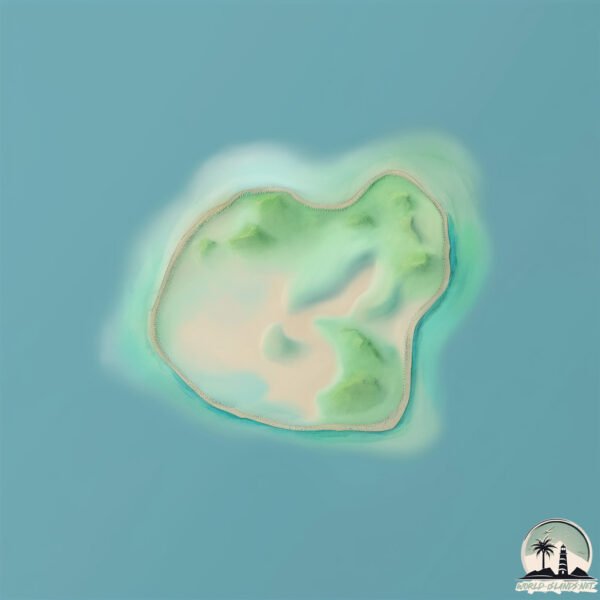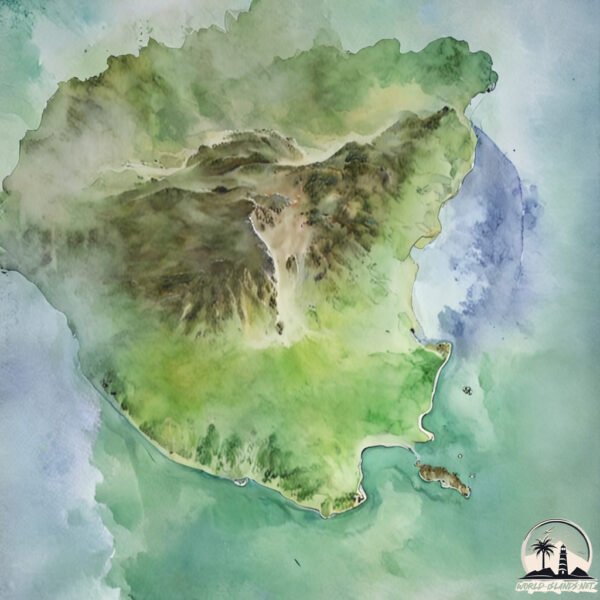Welcome to Hog Island , a Tropical island in the Laccadive Sea, part of the majestic Indian Ocean. This guide offers a comprehensive overview of what makes Hog Island unique – from its geography and climate to its population, infrastructure, and beyond. Dive into the details:
Geography and size of Hog Island
Size: 0.147 km²Coastline: 1.5 kmOcean: Indian OceanSea: Laccadive SeaContinent: Asia
Hog Island is a Tiny Island spanning 0.147 km² with a coastline of 1.5 km.
Archipel: –
Tectonic Plate: India – A major tectonic plate that initially moved northward at a rapid pace before colliding with the Eurasian Plate. This collision is responsible for the uplift of the Himalayas and the Tibetan Plateau.
The geographic heart of the island is pinpointed at these coordinates:
Climate and weather of Hog Island
Climate Zone: TropicalClimate Details: Tropical Monsoon ClimateTemperature: Hot
Climate Characteristics: Characterized by heavy rainfall, high humidity, and uniformly high temperatures, but with a distinct short dry season. It features a seasonal reversal of prevailing wind directions.
Topography and nature of Hog Island
Timezone: UTC+05:30Timezone places: Asia/KolkataMax. Elevation: 5 m Mean Elevation: 4 mVegetation: Rocky TerrainTree Coverage: 79%
The mean elevation is 4 m. The highest elevation on the island reaches approximately 5 meters above sea level. The island is characterized by Plains: Flat, low-lying lands characterized by a maximum elevation of up to 200 meters. On islands, plains are typically coastal lowlands or central flat areas.
Dominating Vegetation: Rocky Terrain
Vegetation: 1 vegetation zones – Minimal Diversity Island
Infrastructure and Travelling to Hog Island
Does the island have a public airport? no .
Does the island have a major port? no .
The mean population of Hog Island is 521 per km². Hog Island is Densely Populated. The island belongs to India .
Continuing your journey, Divar Island is the next notable island, situated merely km away.
Hog Island Boa from White Plains Reptile Expo | New Pickup Reveal!
Another epic addition to the collection, this time, it's a Hog Island Boa I picked up at the White Plains Reptile Expo! These locality ...
Hog Island Boa from White Plains Reptile Expo | New Pickup Reveal!
Another epic addition to the collection, this time, it's a Hog Island ...
Another epic addition to the collection, this time, it's a Hog Island Boa I picked up at the White Plains Reptile Expo! These locality ...
Shucking 2,000 Oysters A Day At Hog Island
In Shuck This, Anthony Rizzi—an oyster shucker from San Francisco's ...
In Shuck This, Anthony Rizzi—an oyster shucker from San Francisco's Hog Island Oyster Co.—heads straight to the source, Hog ...
Ultimate Boa Faceoff: HOG ISLAND vs PEARL ISLAND (Battle of the ISLAND BOAS)!
In this Ultimate Boa Faceoff, Brian compares two island locality boa ...
In this Ultimate Boa Faceoff, Brian compares two island locality boa constrictors, the Hog Island and Pearl Island boa, in 5 different ...
India is classified as Emerging region: BRIC: Brazil, Russia, India, and China – Economies noted for their rapid growth and increasing influence on global affairs. The level of income is Lower middle income.
News – Latest Updates and Headlines from Hog Island
Stay informed with the most recent news and important headlines from Hog Island. Here’s a roundup of the latest developments.
Loading...
Please note: The data used here has been primarily extracted from satellite readings. Deviations from exact values may occur, particularly regarding the height of elevations and population density. Land area and coastline measurements refer to average values at mean high tide.


